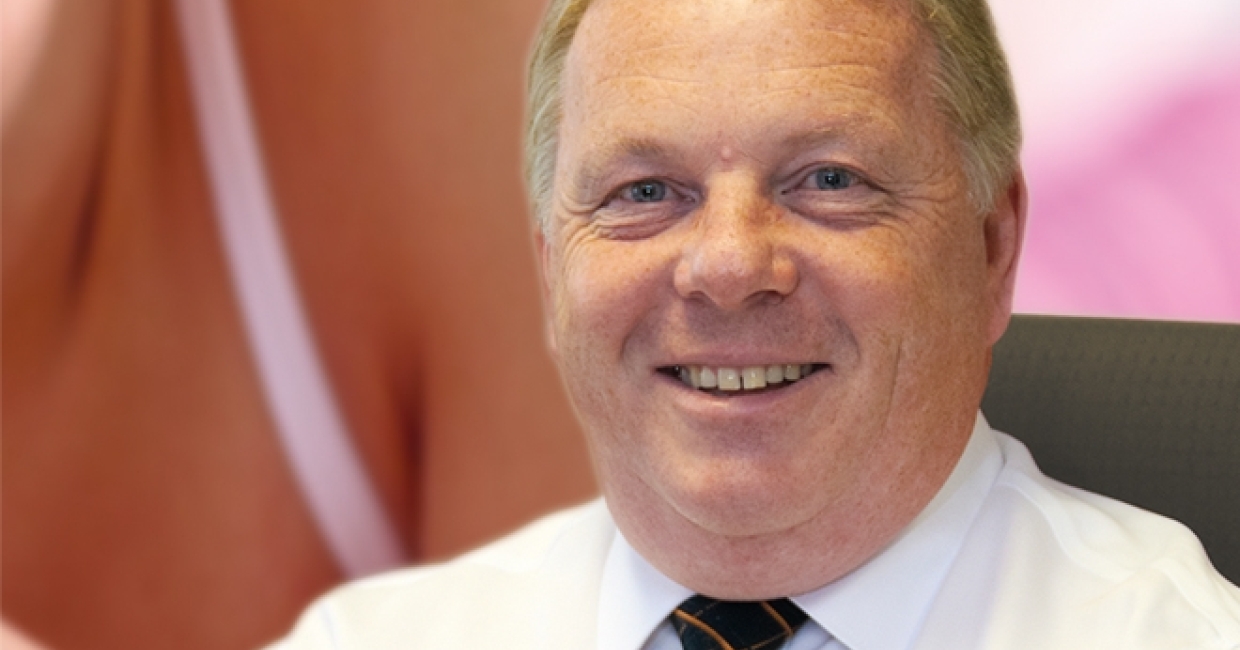As the new Comfort Station Adaptive technology is rolled out to Bensons for Beds stores nationwide, Paul Farley tackles MD Alan Williams on matters such as retail theatre, the customer journey, and the direction of the UK’s biggest bed retail operation …
Operating through 267 stores, Bensons for Beds is the UK’s largest bed retailer. Bensons has enjoyed profit and turnover growth for the last four years – last year alone, the retailer opened 17 new stores and refitted a further 36. Store openings continue apace, with more due before Christmas.
It’s clear that this retail giant is not content to rest on its laurels. The latest developments are just the tip of the iceberg, a multi-million-pound investment by the brand’s owner – the South African group Steinhoff International Holdings, also owner of retailers Harveys and Cargo, plus manufacturing brands Slumberland, Myer’s, Relyon, Staples and Dunlopillo, via Steinhoff UK – designed to cement Bensons’ position in the bed retail landscape.
As a market leader, the retailer innovates by necessity. This summer, Bensons focused on building an emotional connection with its audience through a new advertising campaign, Be Bensons, which put an emphasis on customers’ varied and personal experiences, rather than price.
It then began promoting its new in-store initiative, Comfort Station Adaptive (CSA), a mattress demonstration platform which takes Bensons’ established Comfort Station approach to the next level, and lets customers lay back and experience a range of firmness levels without having to move from bed to bed, before making purchase recommendations based on their body shape and sleeping position.
Pressure-mapping technology is by no means new, but it has never been employed in such a cohesive way in store.
“Over the last few years, we’ve operated a system which rates the firmness of our beds from one (soft) to five (firm),” says Alan, “and it’s been very successful. However, it wasn’t very scientific. It depended very much on an individual’s perception of feel, so it was hard to draw solid conclusions from a customer’s experience.
“We also discovered that consumers prefer being engaged and served, rather than sold to.”
“We discovered that consumers prefer being engaged and served, rather than sold to”
Extensive research preceded 12 months of development, during which Bensons attempted to separate its offer yet further from that of its competitors. The result was CSA, a unique, pressure-sensitive mattress station which demonstrates how a customer’s body reacts to their sleeping position – and adjusts to suit.
“If you sleep on your side, you quite often wake in the night and feel that your shoulder has gone numb,” explains Alan. “That is down to pressure.” The CSA profiling mat is able to highlight where these pressure points are on any given subject. Armed with a customer’s personal profile, Bensons’ customer advisors are then able to recommend a mattress type which will provide them with the support they need.
The CSA makes for compelling retail theatre, and it all takes place in one location. Use of the technology still requires the assistance of a salesperson, but, says Alan, it is a scenario that is much more likely to create a conversation than traditional selling methods might.
“Rather than going in with a script to understand a customer’s needs, they’re able to get into a normal conversation about how people like to sleep, based on their experience, before taking them around the most suitable products,” he explains.
The initial feedback from store teams and consumers has been encouraging. “Research carried out in the stores where we tested it originally saw 75% of the people tested rate it 9/10 in terms of usefulness, and we’re getting a good take-up on people buying products based on the results of the profile,” says Alan.
The CSA’s refined focus on the individual echoes the Be Bensons advertising campaign which aired from July, and hints at a desire to better engage a younger audience than Bensons generally attracts.
“Historically, Bensons has been built around price,” says Alan, “and we’re trying to change that a bit. We still want to be known for our value proposition, yet value might mean different things to different people – it might be price, it might be comfort.
“The new ads were designed to help expand our customer base.They’re very different from our conventional ads in that they don’t feature promotional offers, but I’m quite pleased with the results. I feared that the numbers might drop off as a result of advertising that doesn’t have any price points to draw people in, but, actually, the business has continued to grow.”
“I feared that the numbers might drop off as a result of advertising that doesn’t have any price points to draw people in”
Alan believes that Bensons is traditionally seen as a market-leading middle-market, second- or third-purchase bed retailer, yet still has some way to go if it wishes to establish itself as a destination for the more fashion-oriented younger generation. Innovations such as Be Bensons and the CSA are pivotal to driving footfall into Bensons’ stores, where it is down to Bensons’ staff to close the sales.
“Our sales team’s vast knowledge makes it one of the best in the industry,” says Alan. “Last year, we implemented over 7000 hours of out-of-store training, and had over 10,000 learning sessions completed. This year, we’re planning to increase our budget for training because we really are convinced that it will make a difference.”
Bensons is certainly no stranger to self improvement. It boasts one of the industry’s most comprehensive training regimes, Smile, a programme designed to ensure sales staff are well equipped to take a customer on a buying journey – establish their needs upon arrival, identify a solution, then close the sale. As with the CSA, Smile’s approach is much more focused on consultation than selling.
“There’s an element of sales pitching in there as well,” says Alan, “but it’s more about identifying what the customer is looking for rather than jumping straight into a pitch.”
There’s also Bensons’ e-learning platform, The Learning Store, which, helped perhaps by a growing proclivity towards online research and a degree of in-store downtime, has been roundly embraced by sales staff.
Bensons’ online performance has also benefited from its new web platform, introduced last year. “I’ve sometimes struggled with the notion that people can buy a bed online without even trying it,” admits Alan, “but we’ve all got to keep open minds when looking for ways to bring people into our stores.
“It’s so easy to research online. Time is very precious to people, so the more they can do their research and then go to a dedicated retailer or buy online, from their home, the better. The consumer holds all the cards nowadays. They can choose to shop where and how they want, and we retailers have got to find solutions to satisfy their buying habits.”
That said, other than the technologically-advanced CSA installations, Bensons is in no great hurry to bridge the gap between the bricks and the clicks by bringing further digital elements in-store.
“Whatever we do has got to enhance the experience,” explains Alan. “I don’t want to just create something that’s run of the mill – it has to be something that’s going to extend the visitor’s experience.”
The last 12 months have seen the retailer develop its product range considerably, both in terms of own-brand product – manufactured by its parent company – and those developed in partnership with leading UK brands.
“We’re strongly aligned with Myer’s and Relyon,” says Alan, “so we’ve done a lot under our own in-house brand, Sleepmasters. We’ve also seen success with our Silentnight range – our iGel collection – and more recently, with some of our bedroom furniture. Next year we’ve got plans to work with Slumberland, and we’ve got a new Sensaform range coming.
“However, we would never go 100% own brand. I think brands are playing such a big part in our lives now, it’s important that we keep some of the bigger players. Over the years, we’ve been through a number of different branding iterations –Sleepmasters [Bensons’ former identity] as a business was, historically, 80% own brand, but now we’re using brands quite regularly. Right now, we’re looking at doing work with both Tempur and Mammoth.”
“This year, we’re planning to increase our budget for training because we really are convinced that it will make a difference”
Bensons may be open-minded about bringing brands in store – after all, product turnover always helps refresh the look of a showroom – but the retailer is careful not to let them take over the feel of the space. “With over a dozen brands in store, it could become quite messy,” explains Alan.
Despite this, Bensons has enthusiastically adopted the labelling of NBF Approved products, Alan citing the comfort such guarantees offer the consumer, even if they “maybe don’t fully understand it. It’s a good endorsement – the NBF has sharpened up working practices in the bed market considerably over the last few years”.
As much as Bensons for Beds has benefited from the ongoing refinement of the UK bed industry at a supply level, it has led the way – carefully yet purposefully – in retail, in part thanks to the finances of its ambitious owner, and the industry nous of employees such as Alan.
“I think that the bedding industry, more than any other furniture sector, sees more people seeking advice before making a purchase,” he says. “Furniture, upholstery and carpets are aspirational and inspirational, perhaps, but bedding is such a key part of our lives that we cannot afford to get the purchase wrong.
“There’s no silver bullet when it comes to achieving growth in the market, but a combination of marketing, service, product and training here at Bensons is working pretty well right now.”
This article was published in the October issue of Furniture News magazine. Read an expanded version in the digital magazine.











